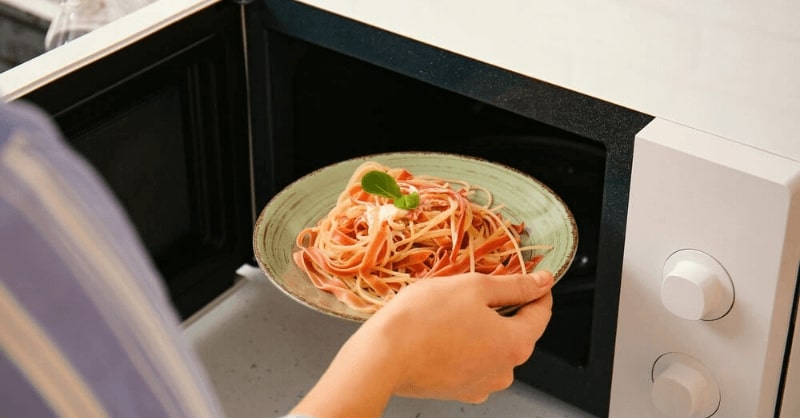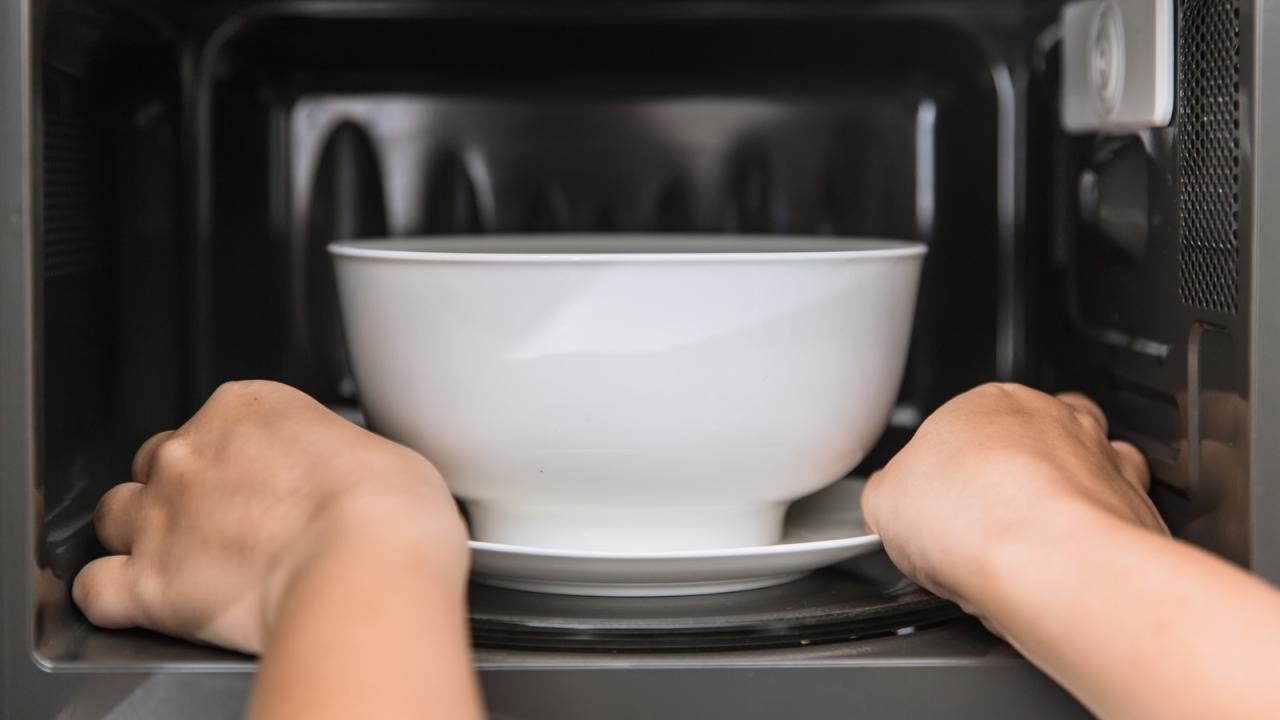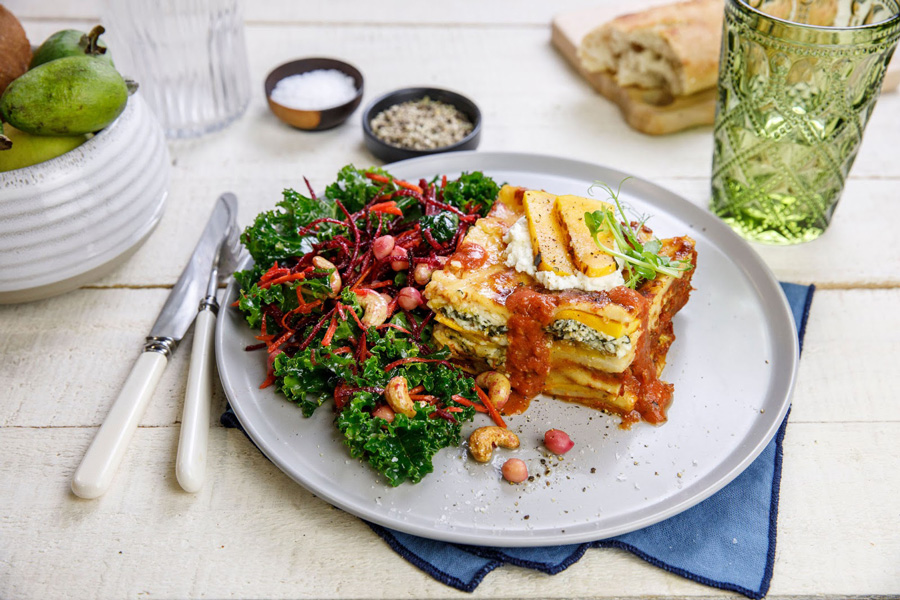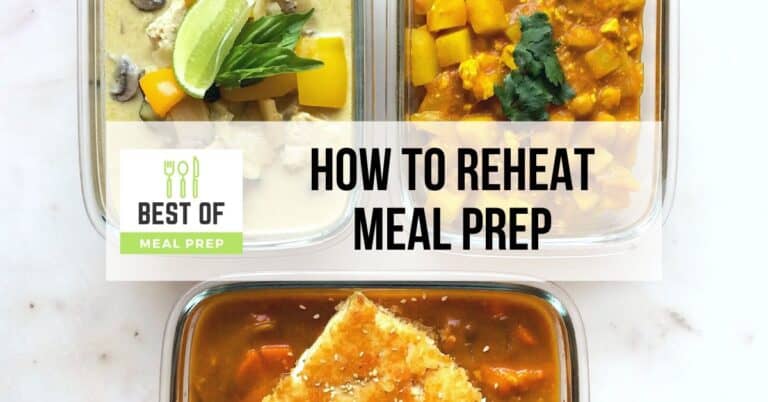Reheating healthy meals correctly is essential to preserve their nutritional value, taste, and texture while ensuring food safety. Whether you are preparing leftovers for a busy week or simply want to enjoy nutritious dishes at a later time, understanding the best practices can make a significant difference. Proper reheating techniques help maintain the qualities of your meals without compromising health benefits, allowing you to enjoy wholesome food every day.
This guide offers comprehensive insights into safe and effective methods for reheating various healthy foods, including step-by-step procedures, safety guidelines, and tips for preserving flavor and texture. By mastering these practices, you can ensure your meals remain nutritious, safe, and delicious upon re-serving.
Best practices for reheating healthy meals
Reheating healthy meals effectively is essential to preserve their nutritional integrity, taste, and texture. Proper reheating techniques ensure that food remains safe for consumption while retaining essential vitamins, minerals, and flavors. Employing the right methods tailored to different types of foods can significantly enhance your meal-prepping experience and contribute to overall health goals.
Understanding the best practices for reheating various healthy foods helps prevent nutrient loss and avoids common pitfalls such as overcooking or uneven heating. This section provides detailed guidance on reheating in microwave, oven, and stovetop, along with a helpful table summarizing key tips for different meal types.
Proper methods for reheating different types of healthy foods
Each type of healthy meal—whether grains, vegetables, proteins, or mixed dishes—has specific reheating requirements to maintain their nutritional value and texture. The following guidance highlights optimal techniques for each method, ensuring your meals are both delicious and nutritious upon reheating.
| Meal Type | Reheating Method | Tips |
|---|---|---|
| Grains (quinoa, rice, oats) | Microwave | Use a microwave-safe cover or vented lid to trap moisture, preventing drying out. Add a splash of water or broth before reheating to restore moisture, and stir halfway through to ensure even heat distribution. |
| Cooked Vegetables | Stovetop | Reheat over low to medium heat in a skillet or saucepan with a small amount of water or olive oil. Cover to retain moisture. Stir occasionally to prevent burning or sticking. |
| Proteins (chicken, fish, legumes) | Oven | Preheat oven to 350°F (175°C). Place protein in an oven-safe dish, cover with foil to prevent dryness, and reheat for 15-20 minutes. Use a food thermometer to ensure safe internal temperature (165°F for poultry, 145°F for fish). |
| Mixed dishes (stir-fries, casseroles) | Microwave or oven | In microwave, cover loosely and reheat in short intervals, stirring in between. For oven, reheat at 350°F (175°C) covered with foil for even heating. Add small amounts of liquid if necessary to prevent dryness. |
Reheating in the microwave
The microwave is a quick and convenient option for reheating healthy meals, but it requires attentive techniques to ensure even heating and nutritional preservation.
- Transfer the food to a microwave-safe container, spreading it evenly for uniform reheating.
- Cover the container with a microwave-safe lid or vented plastic wrap to trap steam and prevent moisture loss.
- Set the microwave to medium or medium-high power (about 70-80%) to avoid overheating and nutrient degradation.
- Heat in short intervals, typically 1-2 minutes, stirring or flipping the food between intervals to promote even heat distribution.
- Use a food thermometer to check that the internal temperature has reached at least 165°F (74°C), ensuring food safety.
- Allow the food to rest for a minute after heating, as residual heat continues to cook the meal slightly.
Tip: Adding a small splash of water or broth before microwaving can help retain moisture and prevent drying, especially for rice and grains.
Reheating in the oven
The oven provides a gentle, even heat ideal for reheating larger quantities or dishes requiring a crispy texture, such as roasted vegetables or casseroles.
- Preheat the oven to 350°F (175°C). Place the meal in an oven-safe dish, spreading it out evenly.
- Cover the dish with aluminum foil to lock in moisture and prevent surface drying.
- Reheat for 15-20 minutes, adjusting the time based on portion size and type of food.
- Use a food thermometer to verify that the internal temperature has reached at least 165°F (74°C) for safety.
- Remove from oven and let it rest for a few minutes before serving to allow heat distribution.
Tip: For crispier textures, remove the foil during the last 5 minutes of reheating, especially for vegetables or bread-based dishes.
Reheating on the stovetop
The stovetop offers control over heat intensity, making it suitable for reheating vegetables, soups, and stews while maintaining their texture and flavor.
- Use a suitable pan or skillet, adding a small amount of water, broth, or healthy oil depending on the dish.
- Reheat over low to medium heat, stirring frequently to prevent sticking or burning.
- For foods like stir-fries or sautéed vegetables, cover the pan to retain moisture and heat evenly.
- Ensure the internal temperature reaches at least 165°F (74°C) by using a food thermometer.
- Remove from heat and serve promptly to enjoy optimal flavor and texture.
Tip: Reheating in small portions prevents overcooking and helps preserve nutrients, especially for delicate vegetables and proteins.
Safe Reheating Guidelines for Nutritious Meals

Ensuring the safety of reheated healthy meals is essential to prevent the growth of harmful bacteria and reduce the risk of foodborne illnesses. Proper reheating practices not only preserve the nutritional quality of your meals but also protect your health. Adhering to specific safety standards during reheating minimizes the chances of contamination and ensures that your food remains safe to consume even after storage and reheating.Safe reheating involves understanding the correct temperatures, timing, and methods for different types of foods.
Bacteria such as Salmonella, Listeria, and Clostridium perfringens can proliferate rapidly if food is not heated thoroughly or is kept at unsafe temperatures for too long. Therefore, following established guidelines is crucial to keeping your meals both nutritious and safe.
Temperature Targets and Timing for Different Meal Components
Maintaining appropriate temperature thresholds during reheating is vital to eliminate bacteria and ensure food safety. Different food components require specific temperature targets to be considered safe for consumption.
Reheating foods to an internal temperature of at least 75°C (165°F) is recommended to effectively kill most bacteria and pathogens. For example, cooked vegetables and grains should reach this temperature, whereas protein sources such as chicken or fish should be reheated to the same or higher internal temperatures to ensure safety. Timing varies based on the quantity and type of food, but generally, reheating should be done until the entire dish is steaming hot, with no cold spots remaining.
Using a food thermometer is the most reliable method to verify that the temperature has been achieved uniformly throughout the meal, preventing cold spots that can harbor bacteria.
Dos and Don’ts for Reheating Healthy Dishes Safely
Implementing best practices in reheating is fundamental to maintaining the integrity and safety of nutritious meals. Below is a checklist of essential dos and don’ts to guide safe reheating procedures:
These points help ensure comprehensive safety standards are met, preventing bacterial growth and food spoilage during the reheating process.
- Do: Reheat leftovers promptly within two hours of cooking to prevent bacterial growth.
- Do: Use a microwave, oven, or stovetop to evenly heat the food, avoiding direct contact with heat sources that cause uneven temperatures.
- Do: Cover dishes during reheating to retain moisture and promote even heat distribution.
- Do: Use a food thermometer to check that the internal temperature reaches at least 75°C (165°F) before serving.
- Do: Stir or rotate food during reheating, especially in microwave ovens, to eliminate cold spots.
- Don’t: Reheat food more than once, as repeated reheating increases the risk of bacterial growth and nutrient loss.
- Don’t: Reheat food slowly or at low temperatures, which can allow bacteria to multiply; always aim for rapid and thorough heating.
- Don’t: Leave reheated food at room temperature for extended periods, as bacteria can quickly multiply in the “danger zone” (4°C to 60°C / 40°F to 140°F).
- Don’t: Reheat food in unvented containers that can trap steam and cause uneven heating or spills.
- Don’t: Rely solely on visual cues like steaming or hot appearance; always verify with a thermometer for safety.
By following these guidelines, you can enjoy your nutritious meals safely, ensuring they retain their health benefits without compromising safety standards. Proper reheating practices are an essential component of a healthy, sustainable eating routine, especially when managing leftovers or meal prep foods.
Techniques for Preserving Taste and Texture When Reheating

Ensuring that healthy meals retain their original flavor, moisture, and texture after reheating is essential for maintaining both nutritional value and culinary satisfaction. Proper reheating techniques can prevent dishes from becoming dry, mushy, or bland, thus making leftovers as appealing as freshly prepared meals. Implementing specific methods tailored to different ingredients enhances the overall eating experience and encourages healthy eating habits by making leftovers more enjoyable.Effective reheating involves more than just applying heat; it requires understanding how various foods respond to different techniques.
For instance, moisture retention is crucial for maintaining the juiciness of proteins and vegetables, while gentle heating preserves the integrity of delicate grains and herbs. Selecting the appropriate method based on the meal’s components ensures that each ingredient retains its intended texture and flavor.
Preserving Vegetables, Grains, and Proteins During Reheating
Vegetables, grains, and proteins each have unique characteristics that influence their reheating process. Vegetables, for example, tend to become overcooked and mushy if exposed to high heat or prolonged reheating. Grains can dry out or become sticky, and proteins risk becoming tough or dry if not reheated properly. Implementing specific techniques helps maintain their original qualities.To preserve the freshness and crunch of vegetables, steaming or gentle sautéing is recommended.
These methods allow vegetables to reheat evenly with minimal moisture loss, preventing over-softening. For grains like rice or quinoa, reheating with a splash of water or broth and using low heat in a covered container helps retain moisture, preventing dryness and clumping. Proteins such as chicken breasts or fish benefit from gentle reheating in the oven or on the stovetop with added moisture, such as broth or a sauce, to prevent them from drying out and becoming tough.
| Food Type | Recommended Reheating Technique | Expected Outcome |
|---|---|---|
| Vegetables | Steaming or gentle sautéing with minimal oil | Retains crispness, vibrant color, and fresh flavor; prevents over-softening |
| Grains (rice, quinoa) | Reheating with a small amount of water or broth in a covered dish, using low heat | Maintains moisture, prevents clumping, and preserves fluffy texture |
| Proteins (chicken, fish) | Reheating in the oven or stovetop with added liquid, on low heat | Prevents dryness and toughness, preserves tenderness and juiciness |
“Gentle reheating methods that include moisture, such as steaming or low-temperature oven heating, ensure the preservation of taste and texture in healthy leftovers.”
Reheating Specific Healthy Meal Categories
Effective reheating of different categories of healthy meals requires tailored techniques to preserve their nutritional value, taste, and texture. Understanding the unique characteristics of salads, grain bowls, roasted vegetables, and lean proteins ensures that each component is reheated safely and maintains its health benefits. Proper handling prevents nutrient loss, reduces waste, and enhances overall meal enjoyment, making it easier to stick to nutritious eating habits even on busy days.Different meal types have distinct compositions—some contain delicate greens, others rely heavily on grains or proteins—that influence how they should be reheated.
Adjusting methods based on these factors can help in retaining flavor, moisture, and nutritional integrity. The following guidelines provide detailed steps for reheating these popular healthy meal categories while emphasizing best practices for quality and safety.
Reheating Salads
Salads, especially those with leafy greens and fresh vegetables, are best enjoyed fresh but can be reheated if they contain cooked ingredients like proteins or grains. Reheating salads requires gentle handling to prevent wilting the greens or compromising flavors.
- Remove any fresh greens or herbs before reheating, as they are sensitive to heat and can become bitter or soggy when reheated.
- If the salad contains cooked grains, beans, or proteins, reheat these components separately using gentle methods such as stovetop on low heat or in the microwave with a damp paper towel to prevent drying out.
- To reheat cooked proteins (like chicken or salmon), place them in a microwave-safe container, cover loosely with a microwave lid, and heat on medium power for 1-2 minutes, checking frequently to avoid overcooking.
- Combine the reheated cooked components with fresh greens and herbs after reheating to maintain crispness and flavor integrity.
- Always consume promptly after reheating to preserve texture and nutrition, and avoid reheating salads multiple times to prevent nutrient degradation.
Reheating Grain Bowls
Grain bowls often feature a base of rice, quinoa, or other grains, topped with vegetables, proteins, and sauces. Proper reheating ensures that each component remains flavorful and nutritious without becoming mushy or dry.
Given the diverse ingredients in grain bowls, reheating methods should be adapted to prevent overcooking or uneven heating. Grains, proteins, and vegetables may require different approaches to optimize results.
- Transfer the grain and protein components to a microwave-safe dish. For best results, spread them evenly to promote uniform heating.
- Cover with a microwave-safe lid or damp paper towel to retain moisture and prevent drying out.
- Microwave on medium power for 1-2 minutes, stirring halfway through to achieve even heat distribution. If reheating on the stovetop, use low to medium heat in a covered skillet or saucepan, stirring occasionally.
- Add fresh or reheated vegetables towards the end of the reheating process if they are firmer, to prevent over-softening.
- Reheat sauces or dressings separately and add after the main components are warmed to preserve their freshness and flavor.
Reheating Roasted Vegetables
Roasted vegetables retain much of their flavor and texture when reheated properly, making them ideal for quick meals or as side dishes.
- Spread roasted vegetables in a single layer on a baking sheet or microwave-safe dish for even reheating.
- For oven reheating, set the oven to 350°F (175°C), cover loosely with foil to prevent drying, and heat for 10-15 minutes until warmed through.
- For microwave reheating, cover the vegetables with a damp paper towel or microwave-safe lid and heat on medium power for 1-2 minutes. Stir or flip halfway through to ensure even heating.
- To maintain crispness, avoid over-reheating; if vegetables are too soft, briefly broil in the oven for 2-3 minutes to restore a slight crunch.
- Adding a drizzle of olive oil or fresh herbs after reheating can enhance flavor and texture.
Reheating Lean Proteins
Lean proteins such as chicken breast, turkey, fish, or tofu are central to many healthy meals. Proper reheating preserves their moisture, texture, and nutritional value.
- Slice or cut the protein into smaller pieces if reheating in the microwave, which promotes faster and more even heating.
- Place the protein in a microwave-safe dish, adding a splash of broth, water, or sauce to keep it moist during reheating.
- Cover loosely with a microwave-safe lid or wrap with plastic wrap, leaving a small vent for steam to escape.
- Reheat on medium power for 1-2 minutes, checking and flipping or stirring halfway through to prevent overcooking or drying.
- For oven reheating, preheat to 350°F (175°C), arrange the protein on a baking sheet, cover with foil, and heat for 10-15 minutes until heated thoroughly.
- Use a food thermometer to verify that the internal temperature reaches at least 165°F (74°C) for safety, especially with poultry and seafood.
Common mistakes to avoid when reheating healthy foods
Reheating healthy meals properly is essential to maintain their nutritional value, safety, and overall quality. However, many individuals inadvertently make errors during the process, which can compromise the health benefits and safety of the food. Recognizing and avoiding these common mistakes ensures that your nutritious meals remain wholesome and safe to consume after reheating.Incorrect reheating practices can significantly diminish the nutritional content of healthy foods and increase the risk of foodborne illness.
Understanding the impact of these errors is crucial for effective reheating strategies that preserve both taste and health benefits.
Overcooking the Meal
One of the most frequent mistakes is overcooking food during reheating. Extended exposure to high temperatures can degrade sensitive nutrients such as vitamins C and B-complex, which are water-soluble and heat-labile. Overcooked foods also tend to lose their texture, becoming mushy or dry, which diminishes the eating experience and can discourage healthy eating habits.
Overheating can reduce nutrient levels by up to 50%, depending on the food and duration of reheating.
To avoid overcooking, it is advisable to reheat foods in short intervals, stirring regularly, and checking the temperature frequently. Using a food thermometer helps ensure the meal reaches the proper reheating temperature without exceeding it.
Using Incorrect Temperature Settings
Reheating foods at too high or too low temperatures can lead to inadequate heating or nutrient loss. Excessively high temperatures may scorch the food or create unsafe hot spots, while too low temperatures can promote bacterial growth, especially in protein-rich or dairy-based dishes.
Safe reheating temperature for most cooked foods is at least 165°F (74°C).
Employing a reliable food thermometer guarantees that the food reaches a safe internal temperature, effectively killing pathogens and maintaining nutrient integrity. Avoid using microwave settings that do not provide uniform heating, such as high-power settings without stirring or rotating the food.
Reheating Multiple Times
Reheating the same meal multiple times is a common mistake that can compromise both safety and nutritional content. Each reheating cycle increases the risk of microbial growth, especially if the food is not cooled and stored properly between reheats. Additionally, repeated heating causes further nutrient degradation and can alter taste and texture unfavorably.
It is recommended to reheat only the portion needed and avoid multiple reheating cycles to ensure safety and maximize nutrient retention.
To mitigate this, divide large portions into smaller containers for reheating and store leftovers promptly in the refrigerator or freezer. Always reheat only once before consumption.
Inadequate Storage Before Reheating
Another common mistake involves improper storage prior to reheating. Leaving cooked foods at room temperature for extended periods increases bacterial proliferation, which can make reheated meals unsafe even if reheated correctly.
Perishable foods should be cooled to below 40°F (4°C) within two hours of cooking and stored in airtight containers.
Proper storage ensures that reheated meals remain safe, and prevents the need for multiple reheating cycles that degrade quality.
Neglecting to Stir or Distribute Heat Evenly
Uneven reheating can leave cold spots where bacteria can survive or cause inconsistent texture and flavor. Stirring or rotating the food during reheating ensures uniform temperature distribution, which is vital for both safety and taste.
Proper stirring reduces the risk of foodborne illness and preserves the meal’s original texture and flavor.
For microwave reheating, use the turntable feature, and for stovetop reheating, stir frequently to achieve even heat distribution.
Tools and Equipment Ideal for Reheating Healthy Meals

Choosing the right kitchen appliances and tools is crucial for maintaining the nutritional quality, taste, and texture of healthy meals during reheating. The appropriate equipment ensures even heating, minimizes nutrient loss, and preserves the original flavor and texture of your dishes. Understanding the strengths and limitations of various appliances can help you make informed decisions, optimize your reheating process, and enjoy nutritious meals every time.
Different types of foods require specific reheating techniques and equipment to retain their health benefits and sensory qualities. From quick microwave reheatings for soups and grains to gentle steaming for vegetables, selecting the right tool is essential for consistent, safe, and delicious results. Furthermore, modern appliances equipped with advanced features can enhance efficiency and ensure even heat distribution, reducing the risk of overcooking or nutrient degradation.
Microwave, Oven, Steamer, and Skillet: Best Kitchen Appliances for Different Foods
Each appliance offers unique advantages suited to particular types of healthy meals. Recognizing these differences allows for optimal reheating practices that preserve the meal’s nutritional integrity and sensory qualities. Below is a detailed overview of common tools used for reheating healthy foods, their suitable meal types, advantages, and practical tips for best results.
| Tool | Suitable Meal Types | Advantages | Tips for Use |
|---|---|---|---|
| Microwave | Soups, grains, leftovers, soft vegetables, cooked proteins | Quick and convenient, energy-efficient, easy to control | Use microwave-safe containers, cover food to retain moisture, stir or rotate halfway through, set appropriate power levels to prevent overcooking |
| Oven | Baked dishes, casseroles, roasted vegetables, bread | Even heating, retains texture, ideal for larger portions | Preheat oven, cover dishes with foil to prevent dryness, use convection setting for even browning, monitor cooking time closely |
| Steamer | Vegetables, fish, dumplings, delicate grains | Preserves nutrients and natural moisture, gentle reheating | Use a steaming basket or tray, ensure enough water in the base, avoid oversteaming to prevent texture loss |
| Skillet | Stir-fried vegetables, sautéed proteins, grain bowls | Quick, allows for texture control, adds flavor through searing | Preheat with a small amount of healthy oil, avoid overcrowding, stir frequently to prevent sticking and uneven heating |
Tip: Combining appliances, such as finishing a dish in the oven after initial microwave reheating, can optimize results by balancing speed and quality.
Last Point

In summary, reheating healthy meals with the right techniques and safety measures not only preserves their nutritional value but also enhances your overall eating experience. Implementing these best practices will help you enjoy nutritious, flavorful meals any time without worry. Keep these tips in mind to make your meal reheating both safe and satisfying, supporting your commitment to health and well-being.